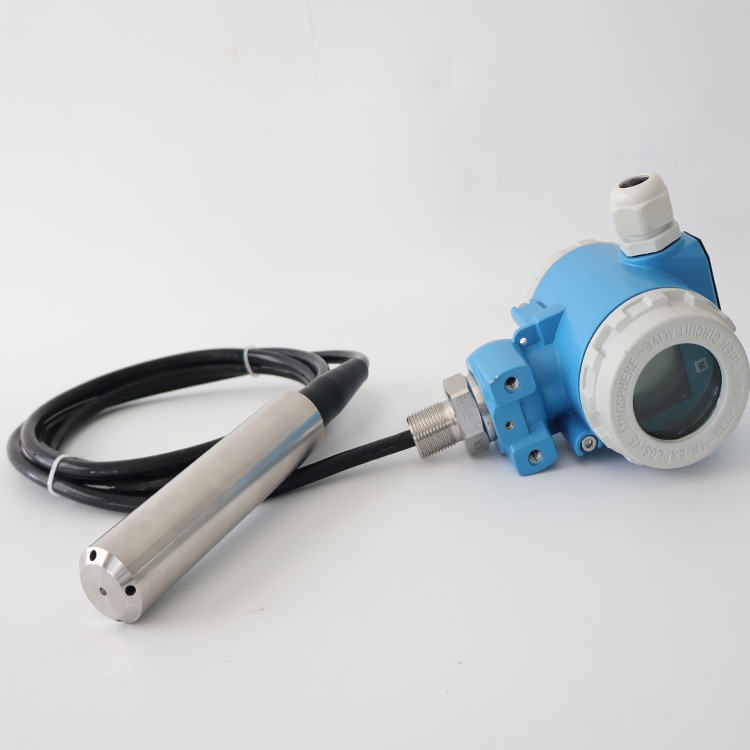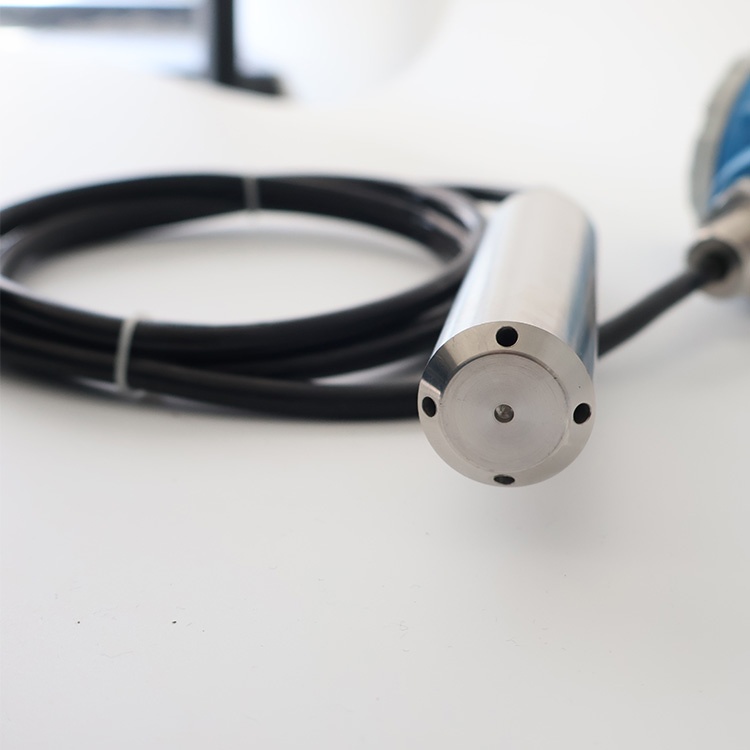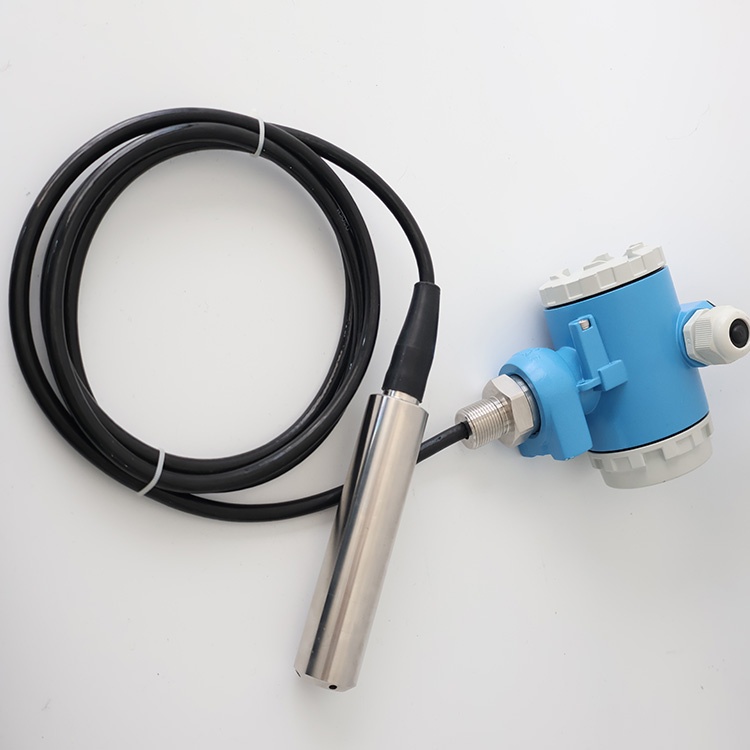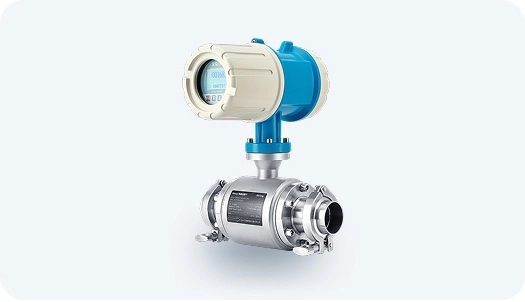-
Date:2025-07-29
-
Page View:142
Submersible pressure transducer is an important instrument used for continuous measurement of liquid level in industrial production, widely used in pools, tanks, wells, chemical vessels and other scenarios of liquid level monitoring. The following is a detailed introduction of its basic knowledge from the working principle, structural composition, classification, technical parameters, installation and maintenance.
The working principle of submersible pressure transducer
The core principle of submersible pressure transducer is the positive proportionality between liquid static pressure and liquid level height:
The static pressure of a point in the liquid is equal to the product of the liquid density (p), the acceleration of gravity (g) and the vertical height of the point to the liquid surface ( h), i.e. P= pgh. Sensor probe into the liquid, through the measurement of the liquid static pressure on the probe, combined with the liquid density and gravitational acceleration (usually a constant), you can calculate the height of the liquid level (h = P / (pg))
Components of a submersible pressure transducer
A submersible pressure transducer usually consists of the following key components:
Pressure transducer: the core component, responsible for converting the liquid pressure into an electrical signal (common types are diffuse silicon sensors, ceramic sensors, etc., depending on the accuracy and corrosion resistance). Aeration cable/ventilation duct:
is used to equalize the atmospheric pressure at the liquid level (eliminating the effect of P on the measurement), ensuring that the measurement reflects only the hydrostatic pressure (h) generated by the liquid level.
Some products combine a cable with a venting function, called an “air conduction cable”, which combines signal transmission and venting.
Stainless steel probe (pressure-sensitive diaphragm): direct contact with the liquid, corrosion resistance (mostly 316 stainless steel, special scenarios can be used Hastelloy, titanium alloy, etc.).
Conversion circuit: amplify, filter and linearize the weak signal (mV level) output from the sensor and convert it to standard output signal (e.g. 4~20mA).
Junction box/transmitter shell: protect the circuit part, usually waterproof, dustproof design (protection level is mostly IP68, can be immersed in liquid for a long time).

Classification of submersible pressure transducer
According to different characteristics, the input level transmitter can be divided into the following categories:
1. According to the type of sensor
Diffuse silicon type: high precision (usually 0.1%~0.5% FS), fast response, suitable for clean liquids (such as tap water, oil), but general corrosion resistance.
Ceramic capacitor type: strong overload resistance, wear resistance, corrosion resistance (suitable for sewage, acid and alkali liquids), accuracy is slightly lower than the diffusion of silicon type (0.2% ~ 1% FS)
Good stability at high temperatures (can be measured at -20~150 ℃ ℃), impact resistance, suitable for high temperatures or harsh environments.
2. According to the characteristics of the measurement medium
Ordinary type: for normal temperature, normal pressure, non-corrosive liquids (such as water, diesel), made of 316 stainless steel.
Anti-corrosive type: the sensor probe is made of polytetrafluoroethylene (PTFE), Hastelloy and other corrosion-resistant materials, used for acid and alkali solutions, chemical slurries, etc. Hygienic type: the probe is smooth with no dead space, in line with food-grade (e.g., 316L stainless steel) or pharmaceutical-grade standards, used in beverage, pharmaceutical and other industries,
3. According to the output signals
Analog Signal Type: 4 ~ 20mA (commonly used, with strong anti-jamming ability), 0 ~ 5V, 0 ~ 10V and so on. 10V, etc.
Digital signal type: RS485 (Modbus protocol), HART protocol, etc., to support remote communication and parameter configuration.
Classification of submersible pressure transducer
According to different characteristics, the input level transmitter can be divided into the following categories:
1. According to the type of sensor
Diffuse silicon type: high precision (usually 0.1%~0.5% FS), fast response, suitable for clean liquids (such as tap water, oil), but general corrosion resistance.
Ceramic capacitor type: strong overload resistance, wear resistance, corrosion resistance (suitable for sewage, acid and alkali liquids), accuracy is slightly lower than the diffusion of silicon type (0.2% ~ 1% FS)
Good stability at high temperatures (can be measured at -20~150 ℃ ℃), impact resistance, suitable for high temperatures or harsh environments.
2. According to the characteristics of the measurement medium
Ordinary type: for normal temperature, normal pressure, non-corrosive liquids (such as water, diesel), made of 316 stainless steel.
Anti-corrosive type: the sensor probe is made of polytetrafluoroethylene (PTFE), Hastelloy and other corrosion-resistant materials, used for acid and alkali solutions, chemical slurries, etc. Hygienic type: the probe is smooth with no dead space, in line with food-grade (e.g., 316L stainless steel) or pharmaceutical-grade standards, used in beverage, pharmaceutical and other industries,
3. According to the output signals
Analog Signal Type: 4 ~ 20mA (commonly used, with strong anti-jamming ability), 0 ~ 5V, 0 ~ 10V and so on. 10V, etc.
Digital signal type: RS485 (Modbus protocol), HART protocol, etc., to support remote communication and parameter configuration.
The following core parameters should be paid attention to when selecting:
Measuring range: i.e. measurable liquid level height (e.g. 0~5m, 0~20m, 0~100m, etc.), which needs to be selected according to the actual vessel depth, with a certain margin.
Accuracy level: usually expressed as a percentage of full scale (FS), such as 0.1% FS, 0.2% FS, 0.5% FS (the higher the accuracy, the higher the price).
Operating temperature: the sensor withstand the temperature range of the medium (such as -40 ~ 80 ℃, -20 ~ 150 ℃), high-temperature scenarios need to choose high-temperature models. Output signal: according to the secondary instrumentation (such as PLC, DCS) interface selection, 4 ~ 20mA for industrial standards.
Protection level: submersible pressure transducer needs to contact with liquid for a long time, the protection level is at least IP68 (completely dustproof, can be immersed in the specified depth of water for a long time)
Overload capacity: the overload pressure that the sensor can withstand (usually 1.5~3 times of the full-scale range), to avoid the damage due to the sudden change of the liquid level or the installation error.

submersible level transmitters

submersible liquid level sensor
Applicable scenarios and limitations of submersible pressure transducer
Applicable scenarios Level measurement of open or closed containers (e.g. water tanks, oil tanks, reaction kettles);
Municipal water supply, wastewater treatment, water conservancy monitoring (river, reservoir level);
Liquid tank level monitoring for chemical, food, pharmaceutical and other industries.
Limitations
Not suitable for liquids containing a large number of bubbles, violent fluctuations or easy to crystallize (may lead to pressure measurement inaccuracy);
Measurement accuracy is affected by the density of the liquid (density changes need to be recalibrated, such as density fluctuations caused by temperature changes);
Corrosive media need to be strictly matched to the probe material, or it is easy to be damaged.
Submersible pressure transducer by virtue of simple structure, easy installation, stable measurement and other characteristics, has become the industrial level measurement of the abundance of the flow of choice, the core is through the static pressure conversion to achieve the level monitoring, the selection of the combination of media characteristics, accuracy requirements, ambient temperature and other factors, and pay attention to the details of the installation and maintenance, in order to ensure reliable operation for a long period of time.










